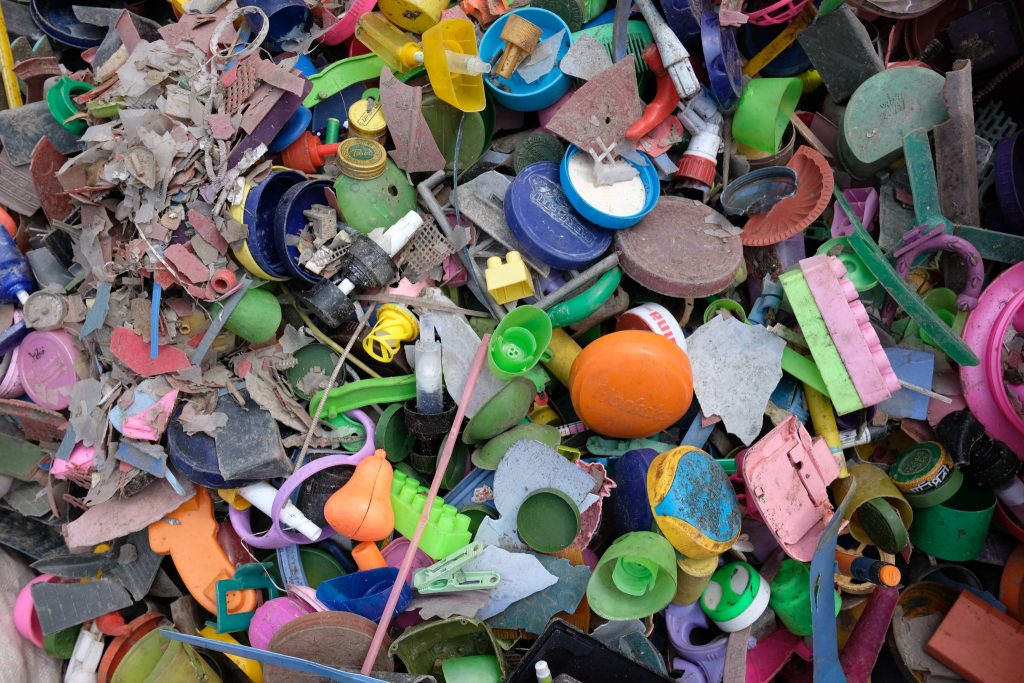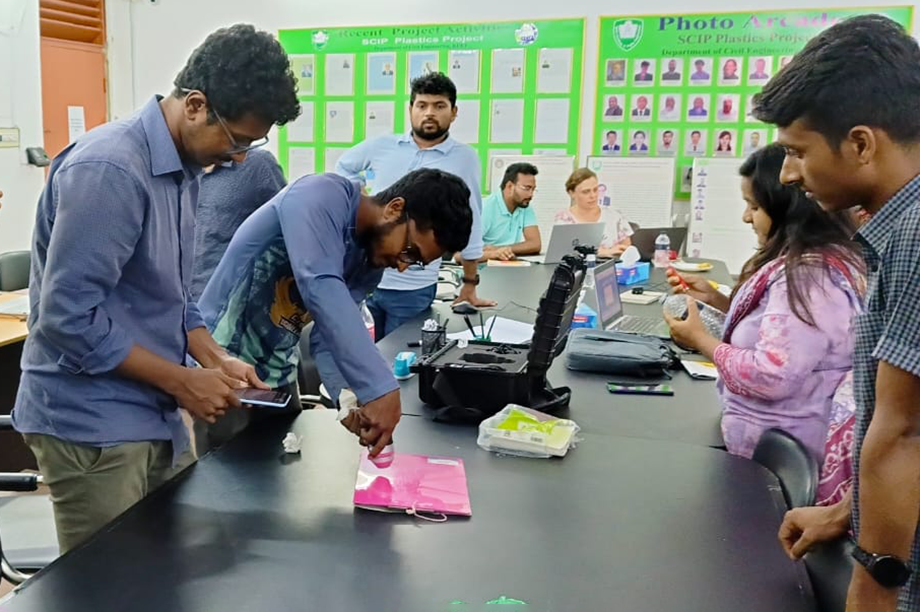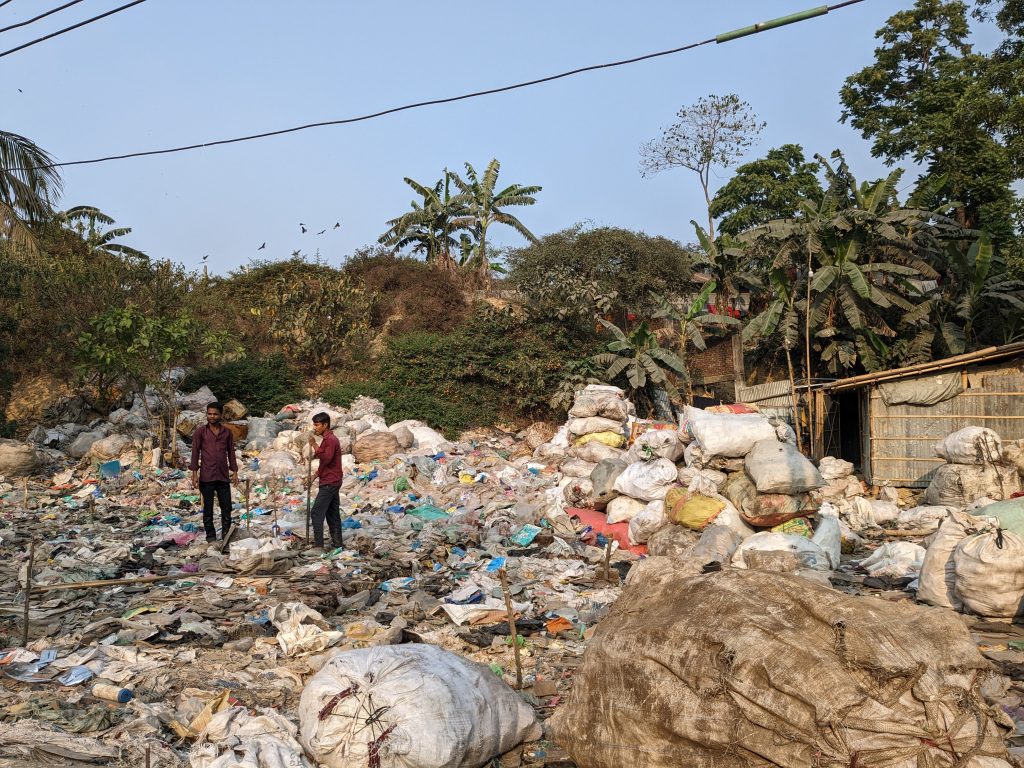Plastic waste identification via NIR technology
The use of Near-Infrared (NIR) technology is widely used in automated waste sorting industries due to its ability to quickly and accurately identify and categorize different types of materials. These scanners emit light in the near-infrared spectrum and measure the reflected or transmitted light from the waste materials. Each material has a unique absorption pattern, allowing the scanner to determine the type of plastic material. The SCIP Plastics team from the Waste Lab now operates a handheld NIR scanner that can be used universally, not only to investigate purity levels or qualities, as in materials science, but also to identify different types of plastics in mixed solid waste.


However, contrary to the industry, automation of waste sorting is not the aim of our research. We aim to create a knowledge pool of information about the types of plastics present in our environment. What types of plastics end up in our environment and what damage do they cause? What possibilities for prevention are available to us and how can we evaluate them? With the vast variety of different plastic materials, properties, and production methods, we need to find numerous treatment approaches, since there is no “one size fits all” solution. We urgently require more analytics to ensure safe and healthy treatment options to develop knowledge-based countermeasures.
